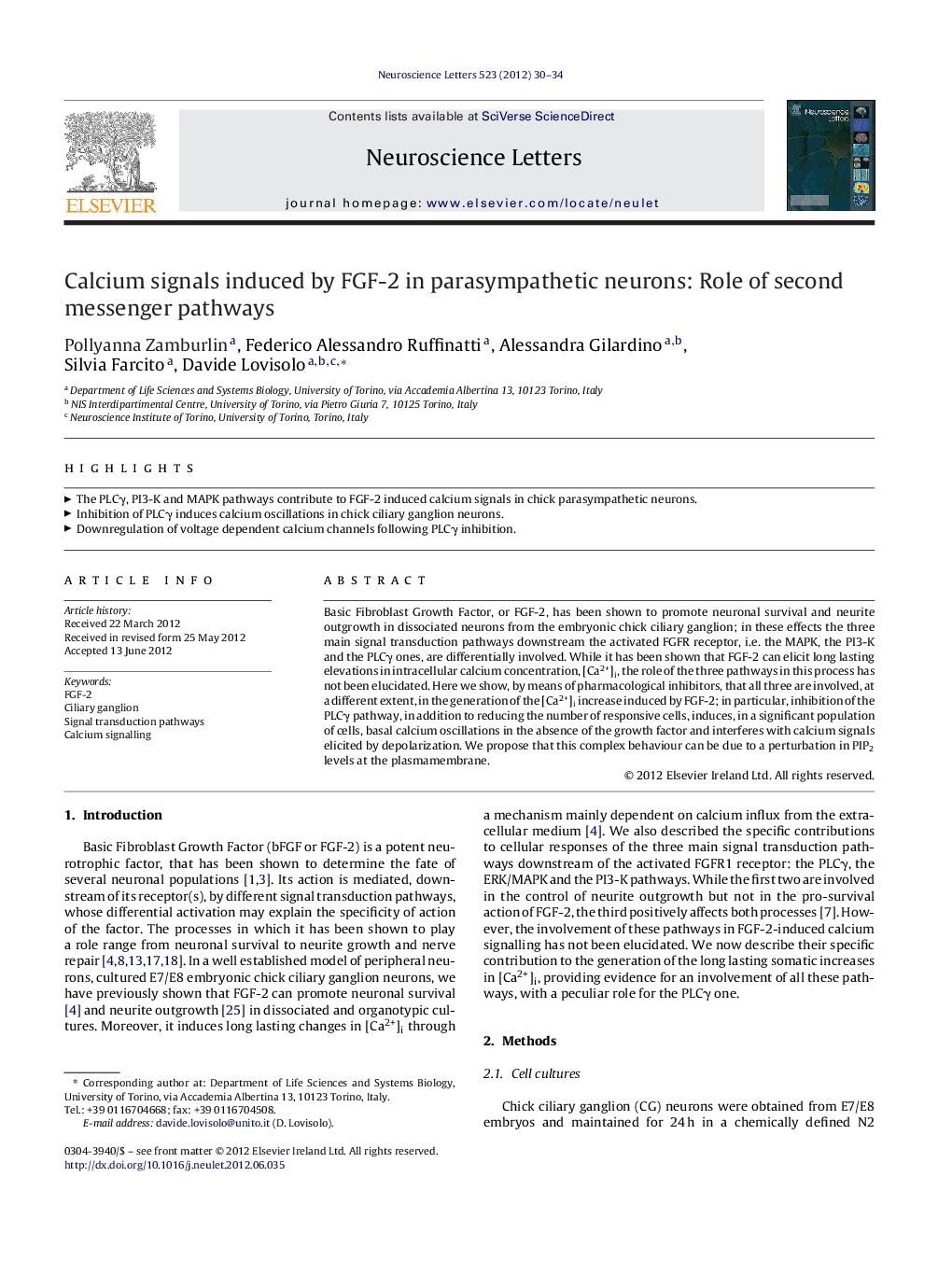| Article ID | Journal | Published Year | Pages | File Type |
|---|---|---|---|---|
| 4344433 | Neuroscience Letters | 2012 | 5 Pages |
Basic Fibroblast Growth Factor, or FGF-2, has been shown to promote neuronal survival and neurite outgrowth in dissociated neurons from the embryonic chick ciliary ganglion; in these effects the three main signal transduction pathways downstream the activated FGFR receptor, i.e. the MAPK, the PI3-K and the PLCγ ones, are differentially involved. While it has been shown that FGF-2 can elicit long lasting elevations in intracellular calcium concentration, [Ca2+]i, the role of the three pathways in this process has not been elucidated. Here we show, by means of pharmacological inhibitors, that all three are involved, at a different extent, in the generation of the [Ca2+]i increase induced by FGF-2; in particular, inhibition of the PLCγ pathway, in addition to reducing the number of responsive cells, induces, in a significant population of cells, basal calcium oscillations in the absence of the growth factor and interferes with calcium signals elicited by depolarization. We propose that this complex behaviour can be due to a perturbation in PIP2 levels at the plasmamembrane.
► The PLCγ, PI3-K and MAPK pathways contribute to FGF-2 induced calcium signals in chick parasympathetic neurons. ► Inhibition of PLCγ induces calcium oscillations in chick ciliary ganglion neurons. ► Downregulation of voltage dependent calcium channels following PLCγ inhibition.
